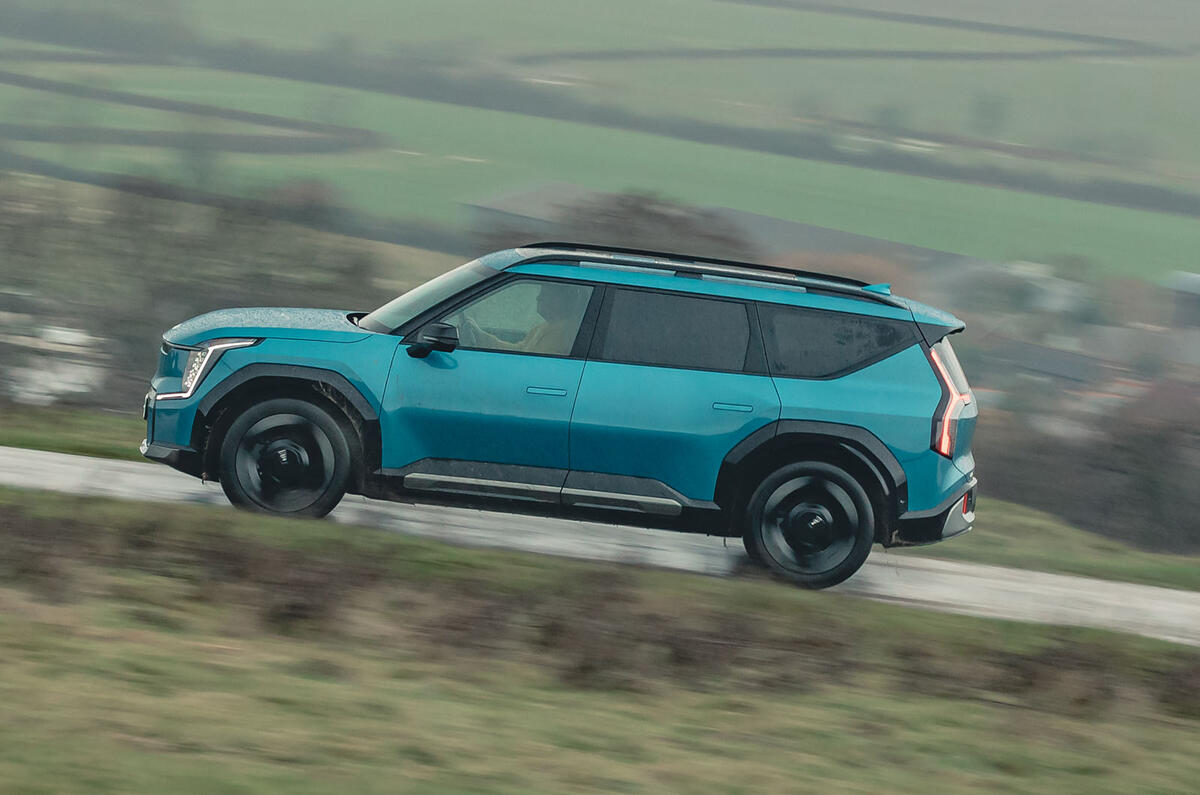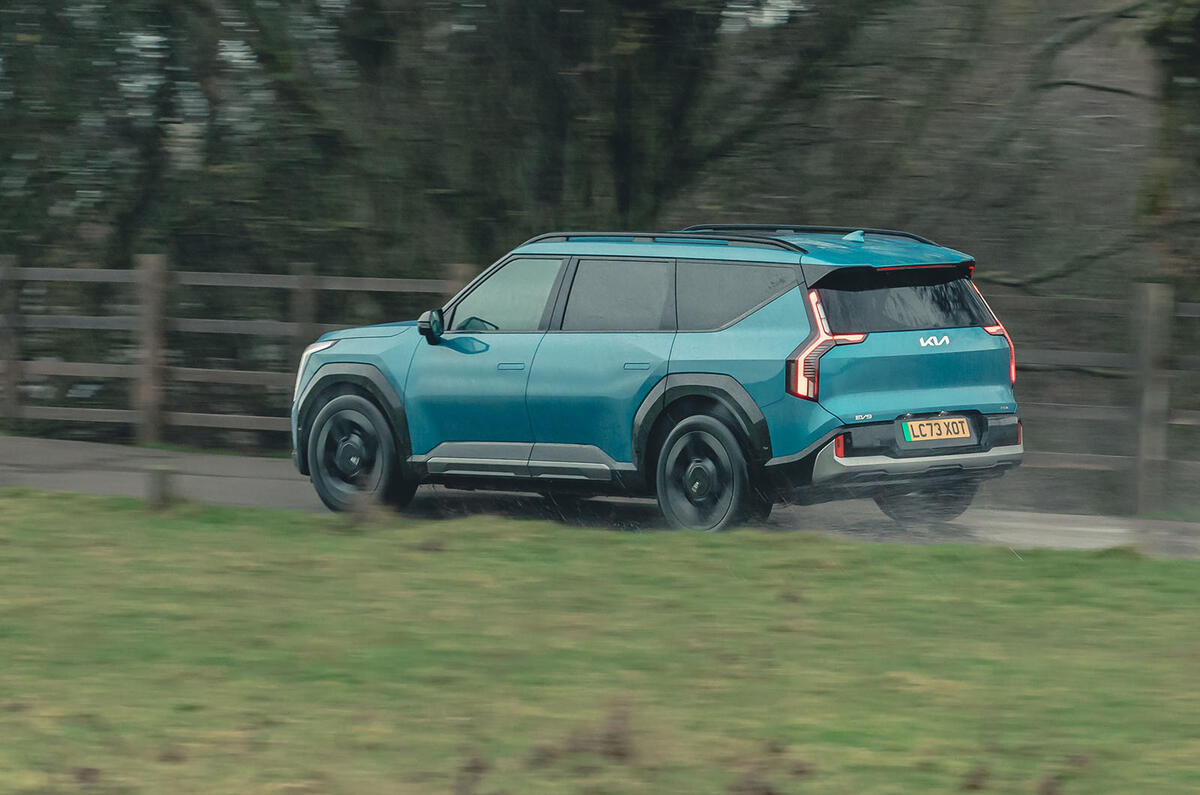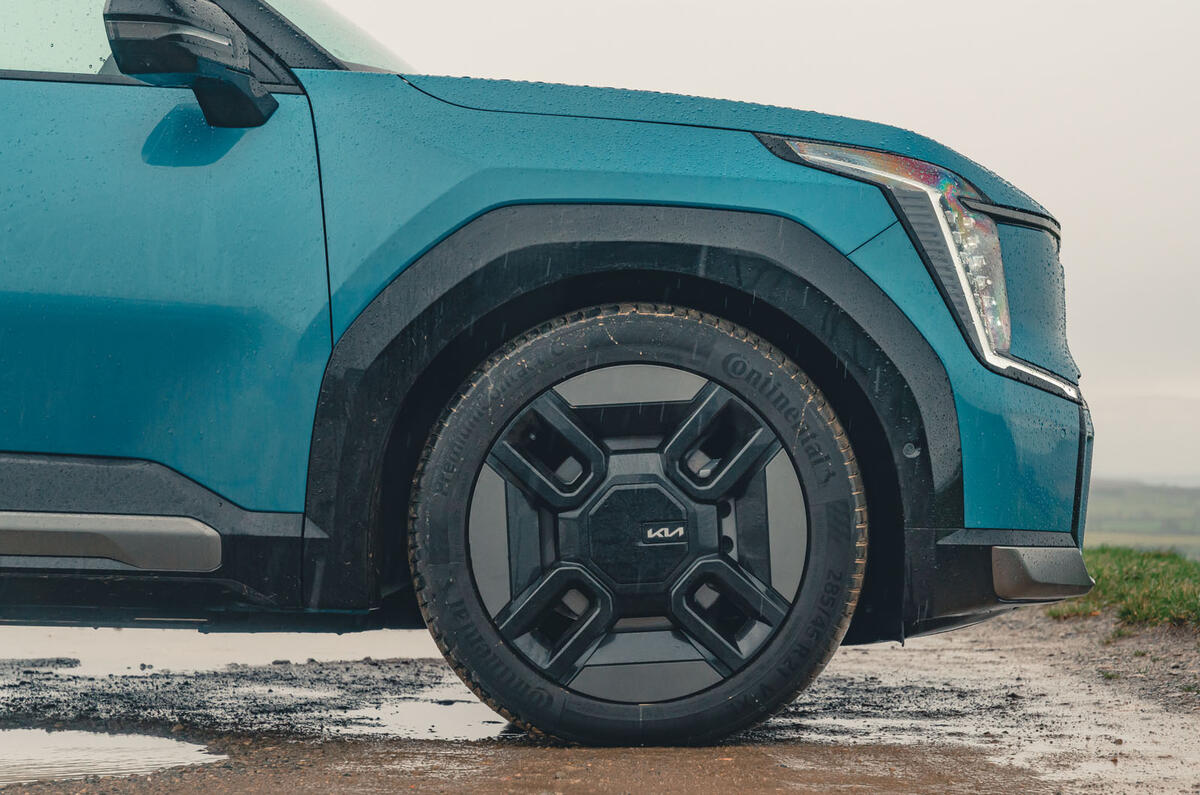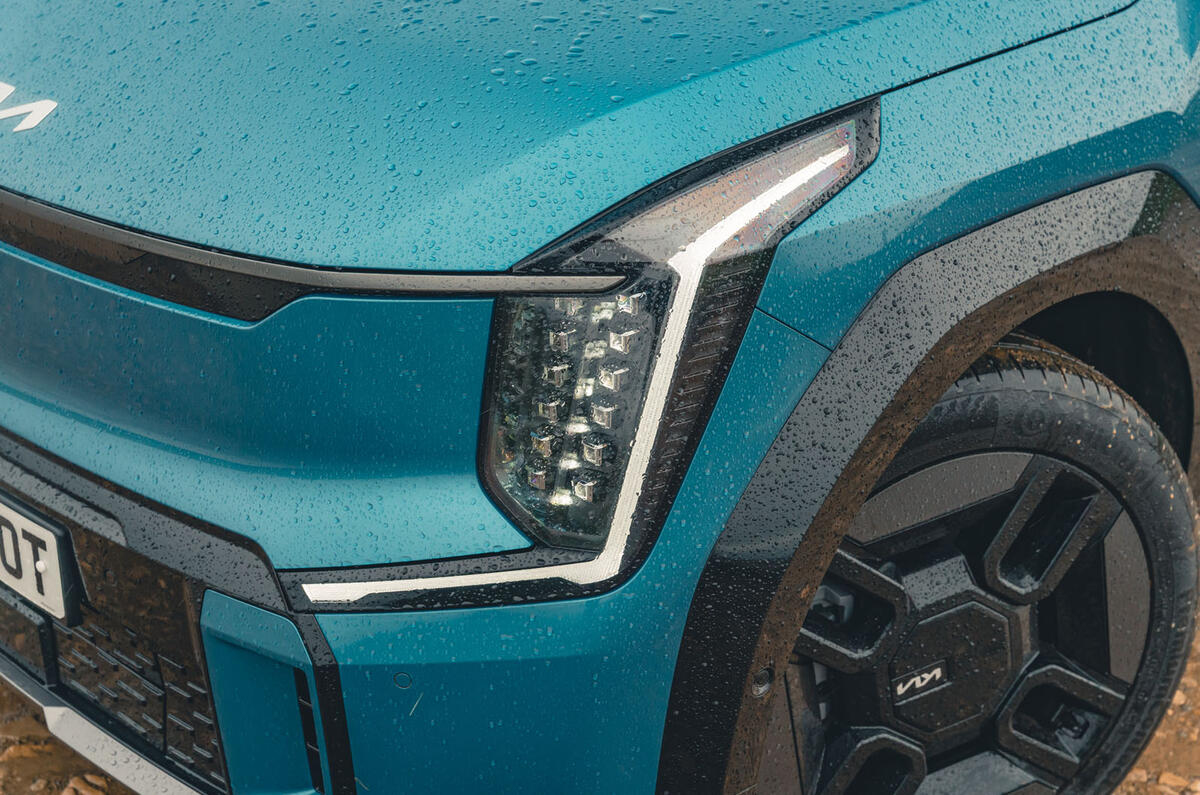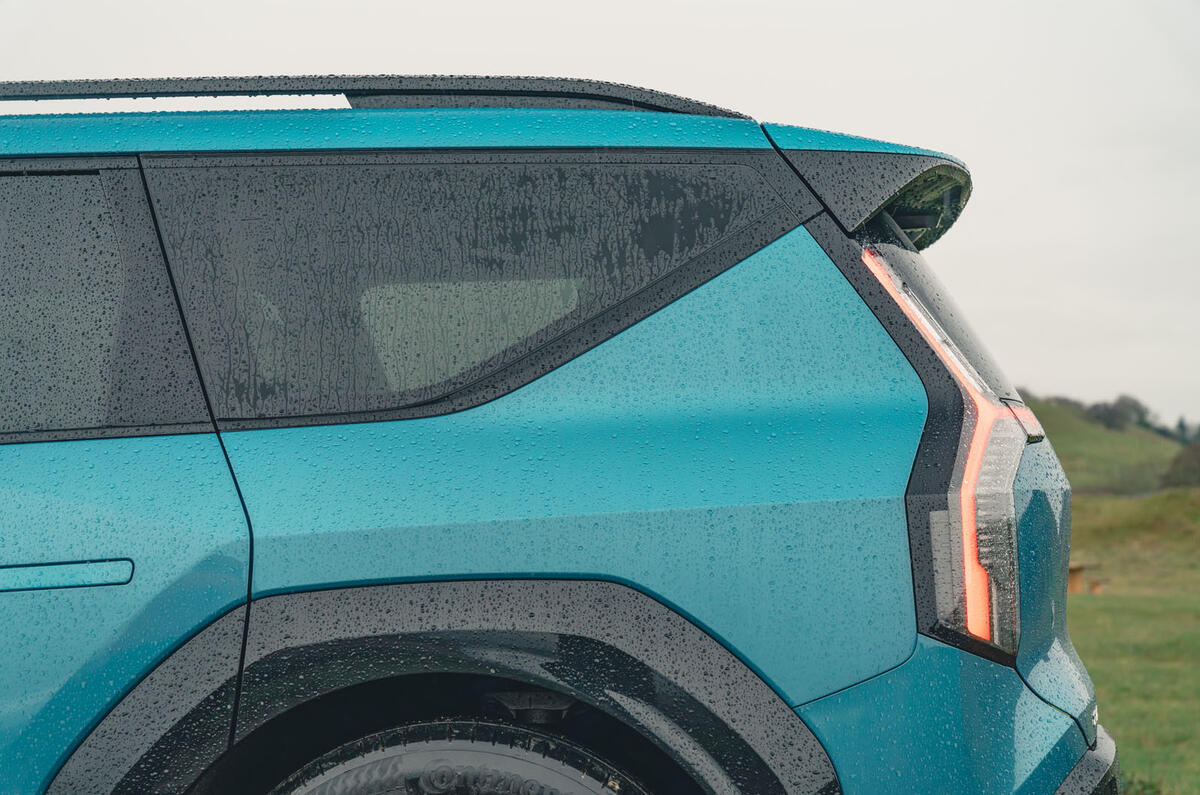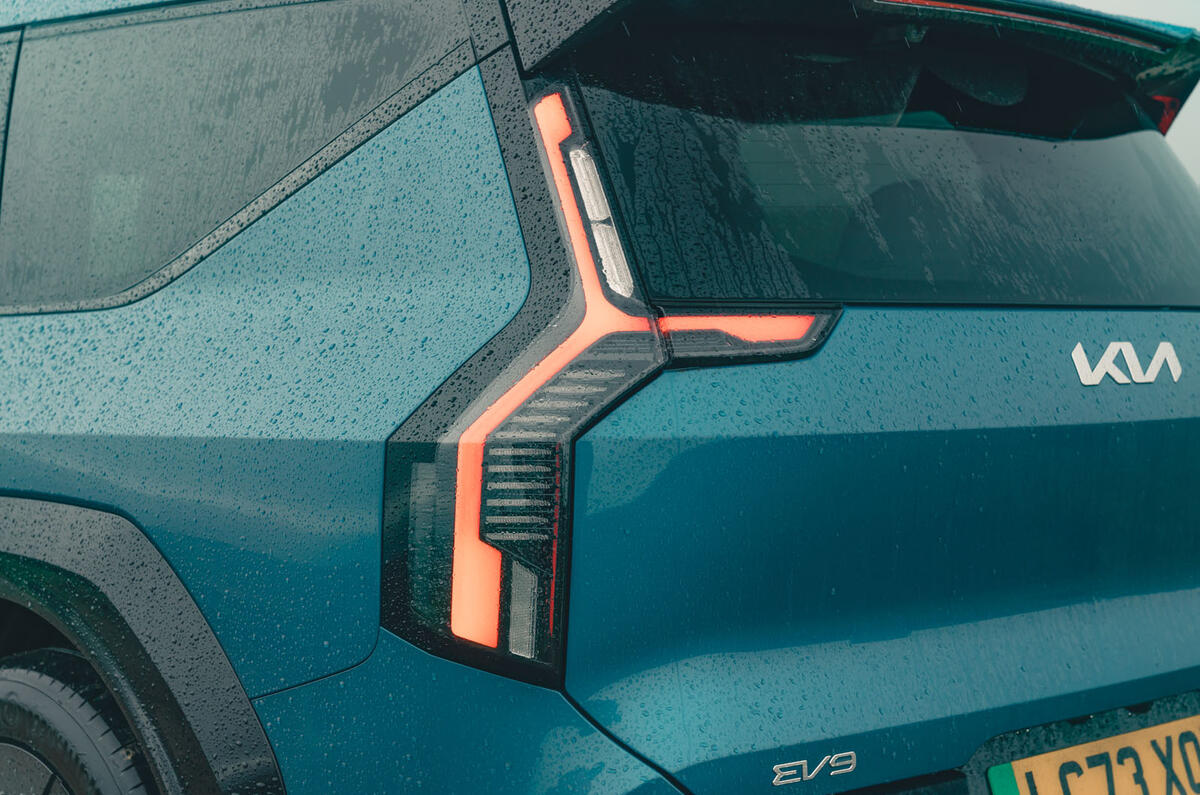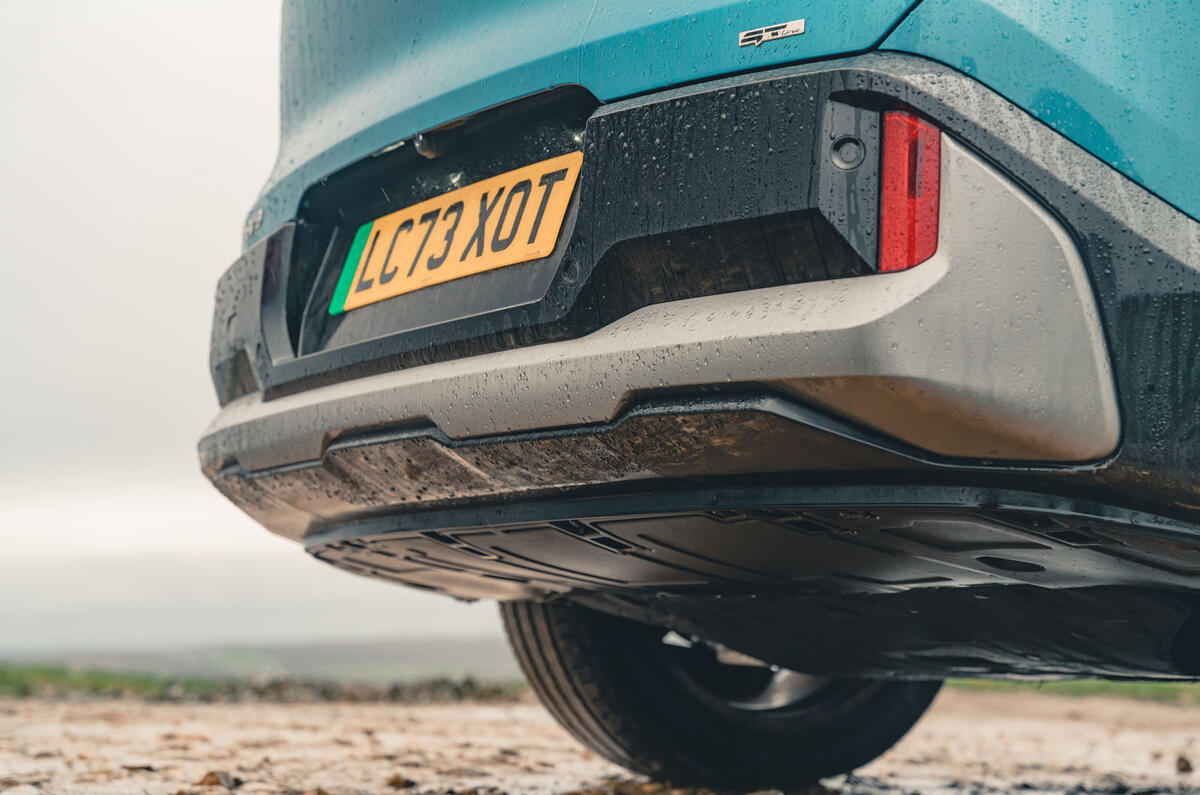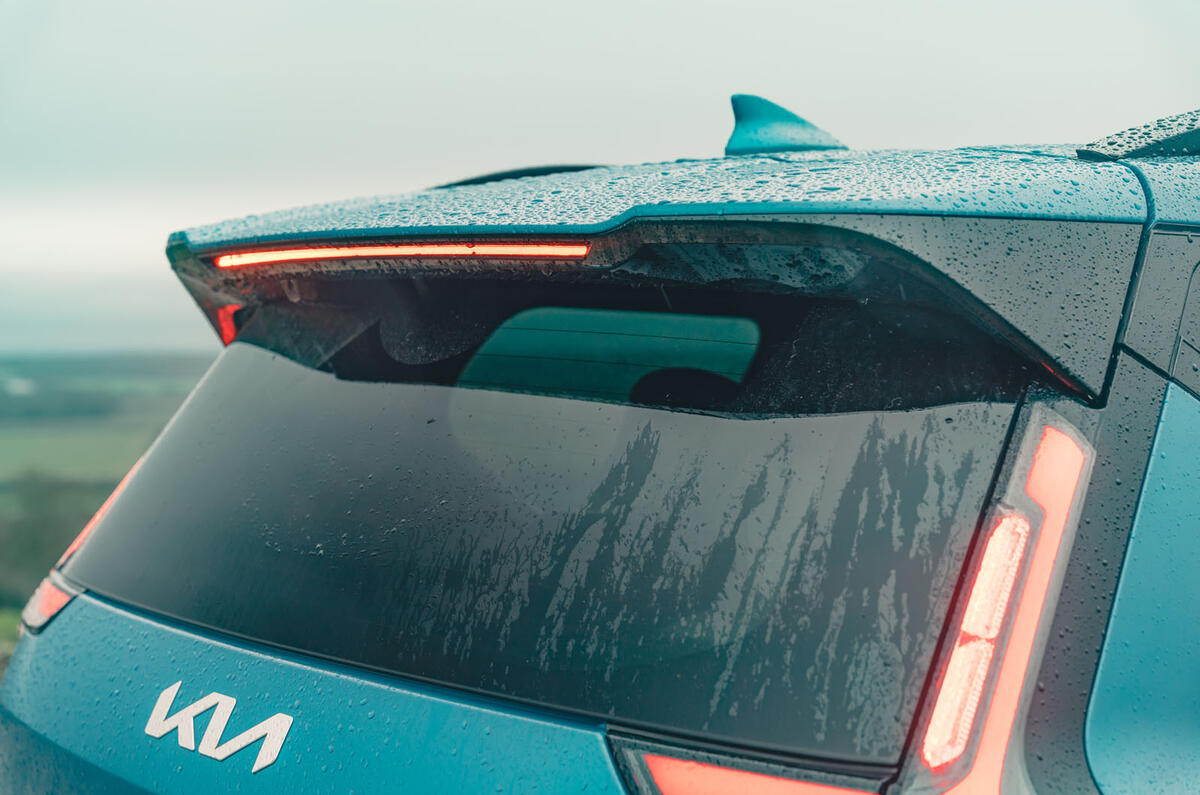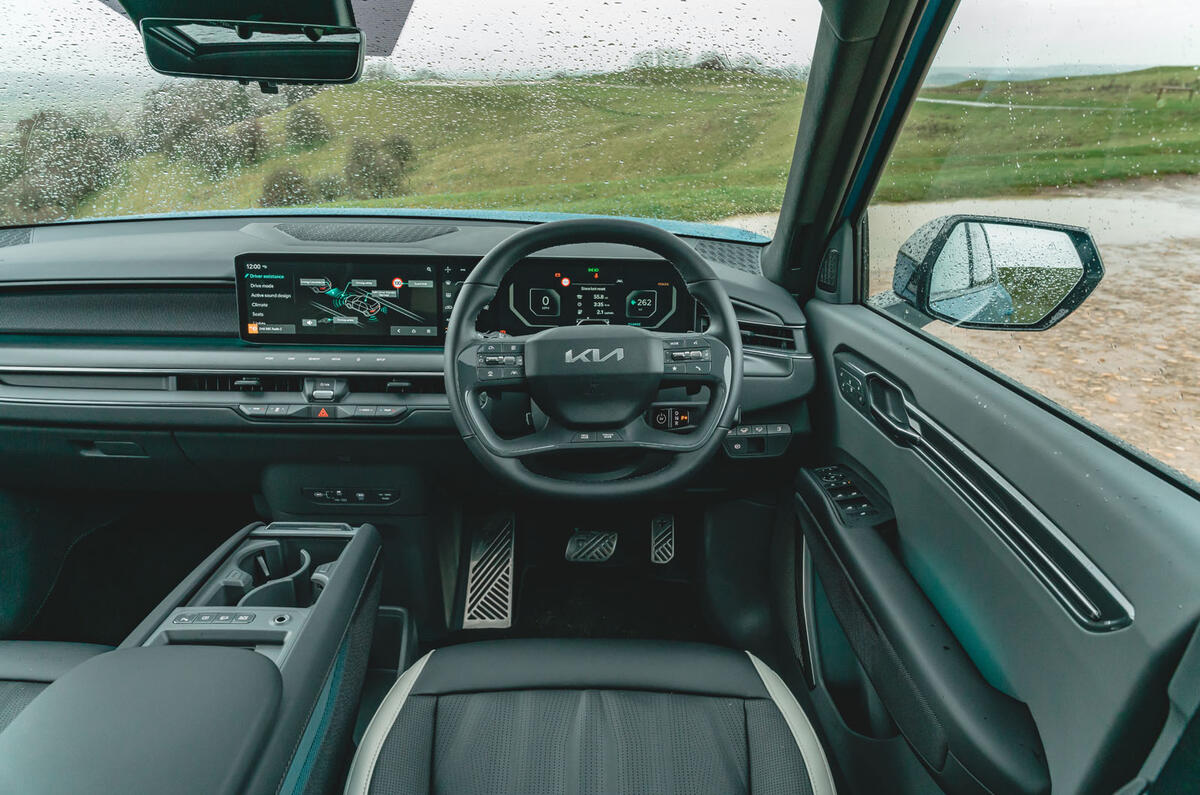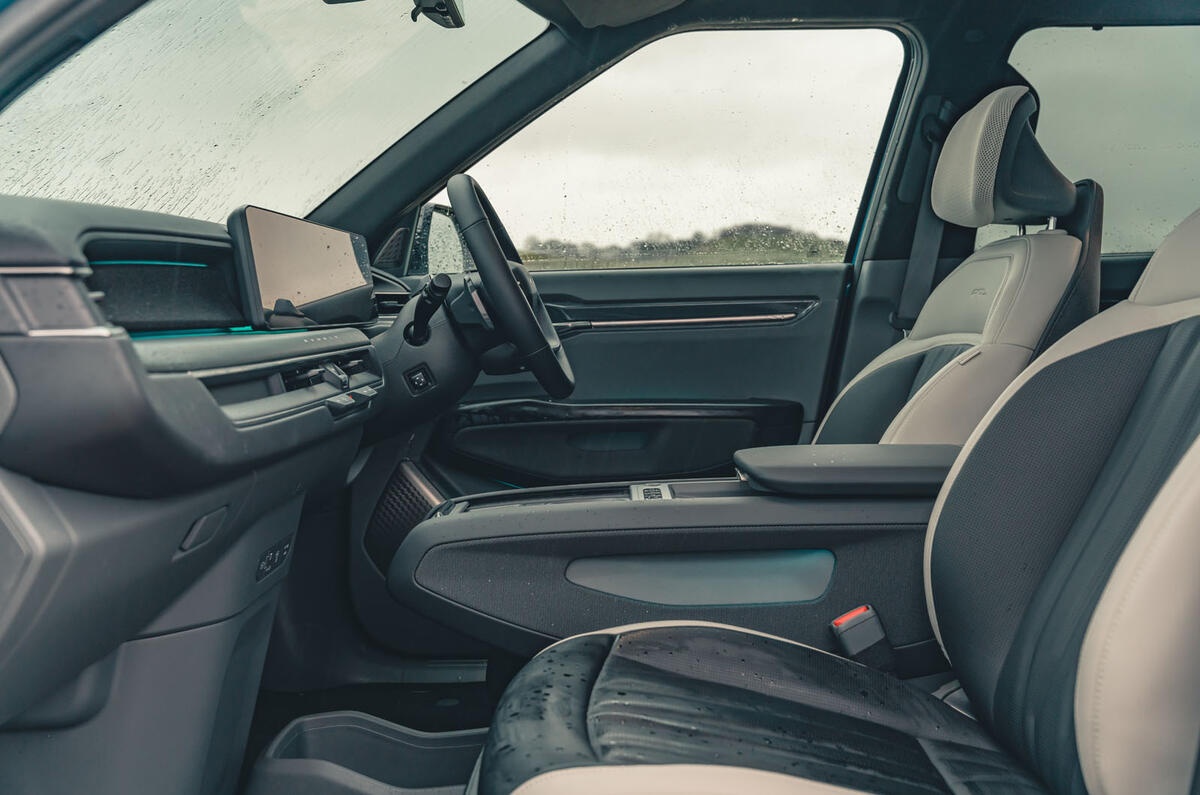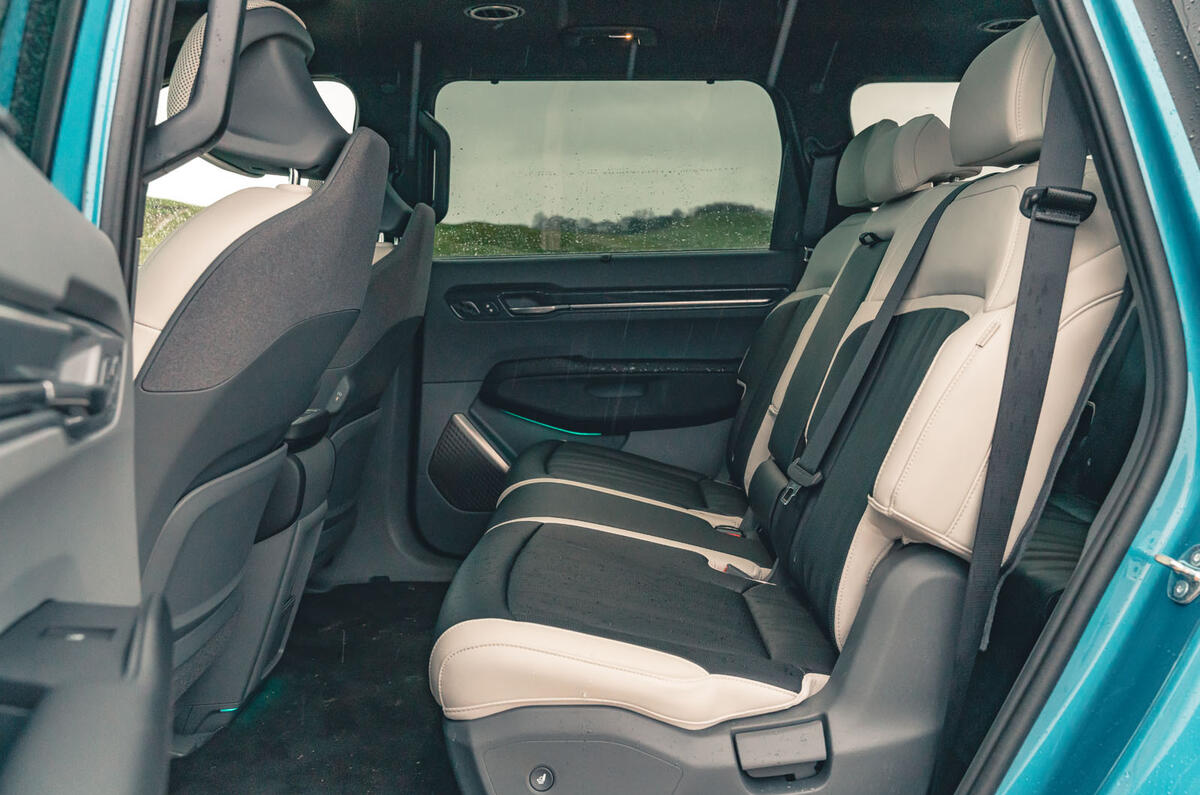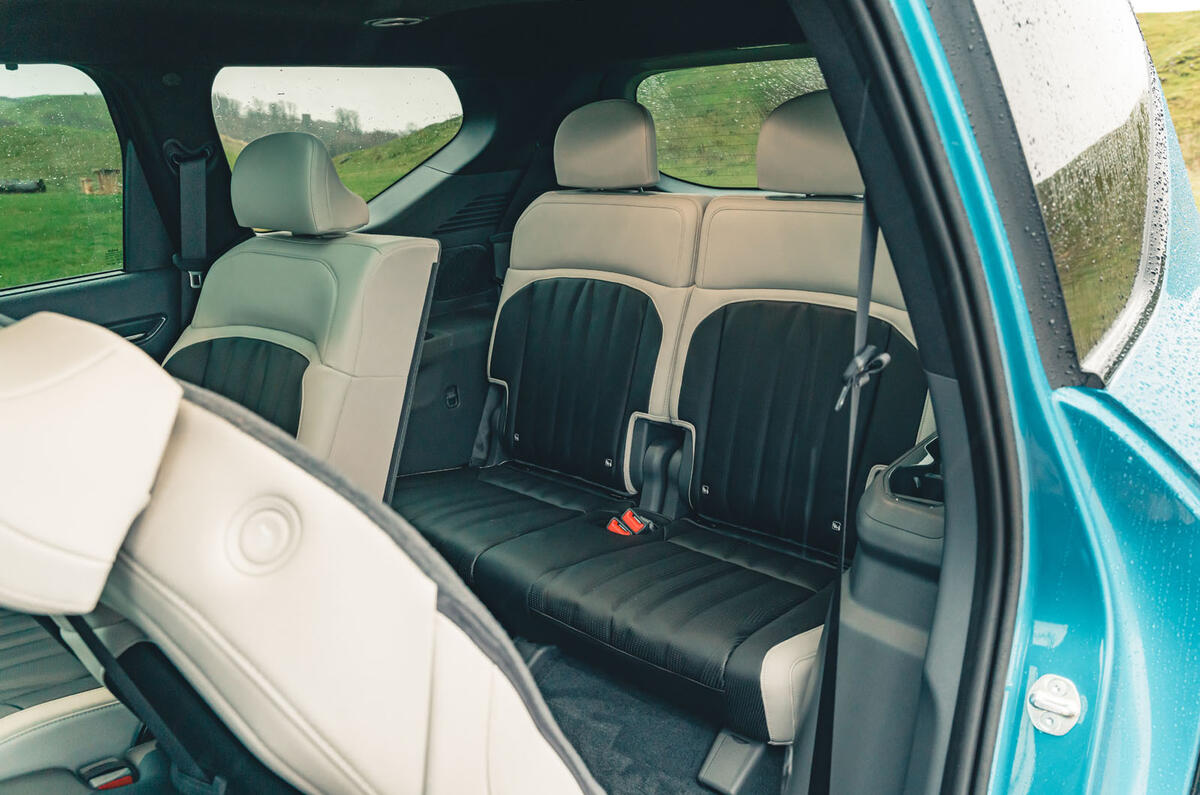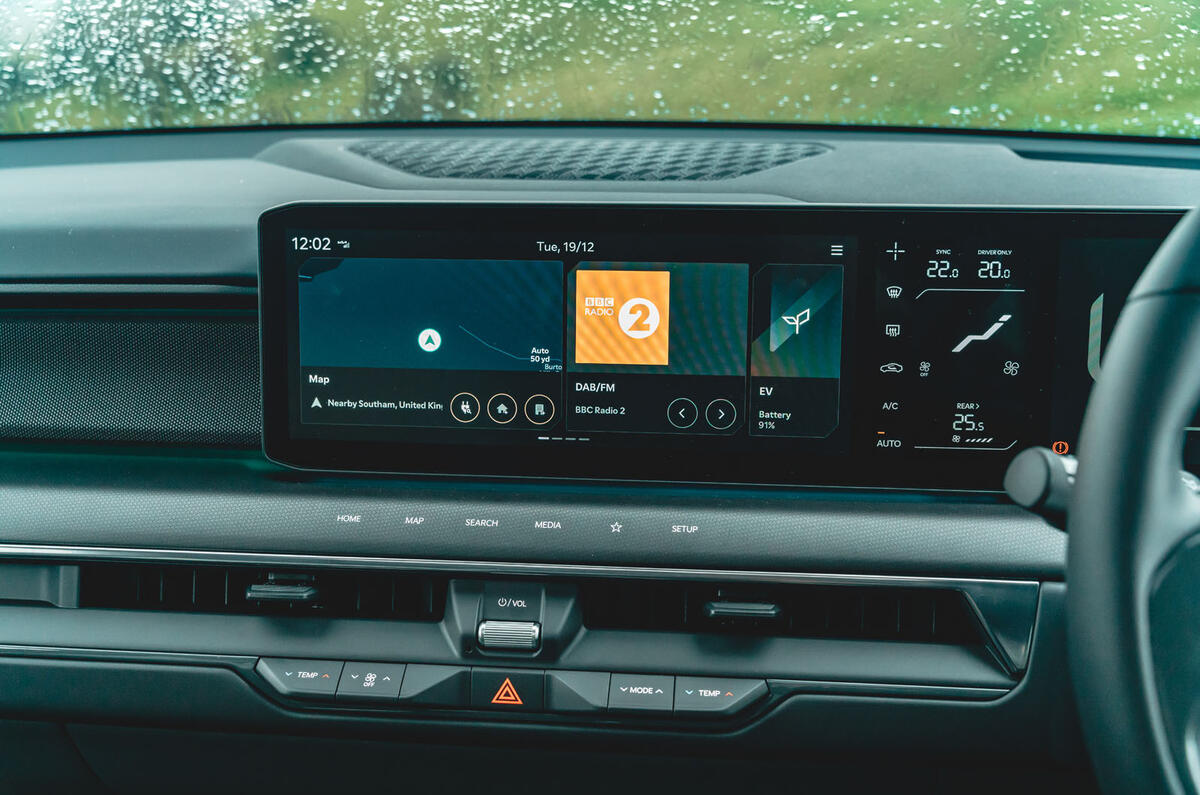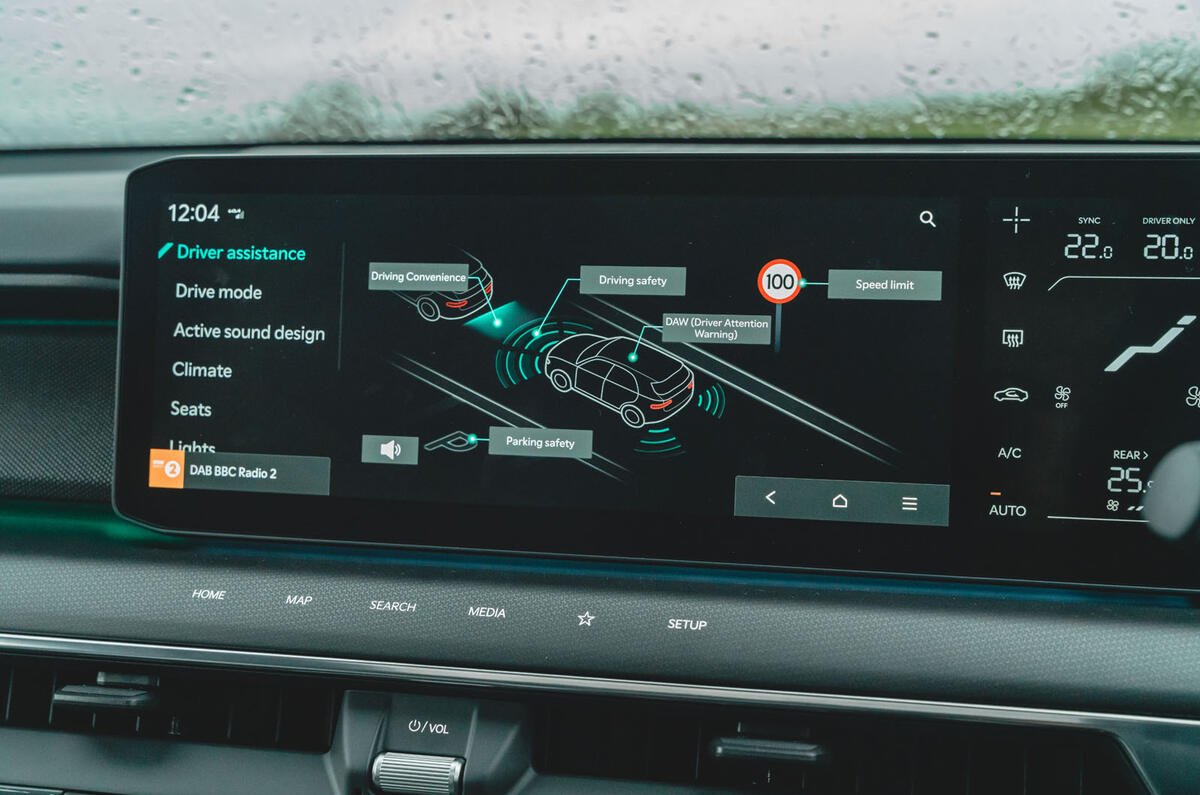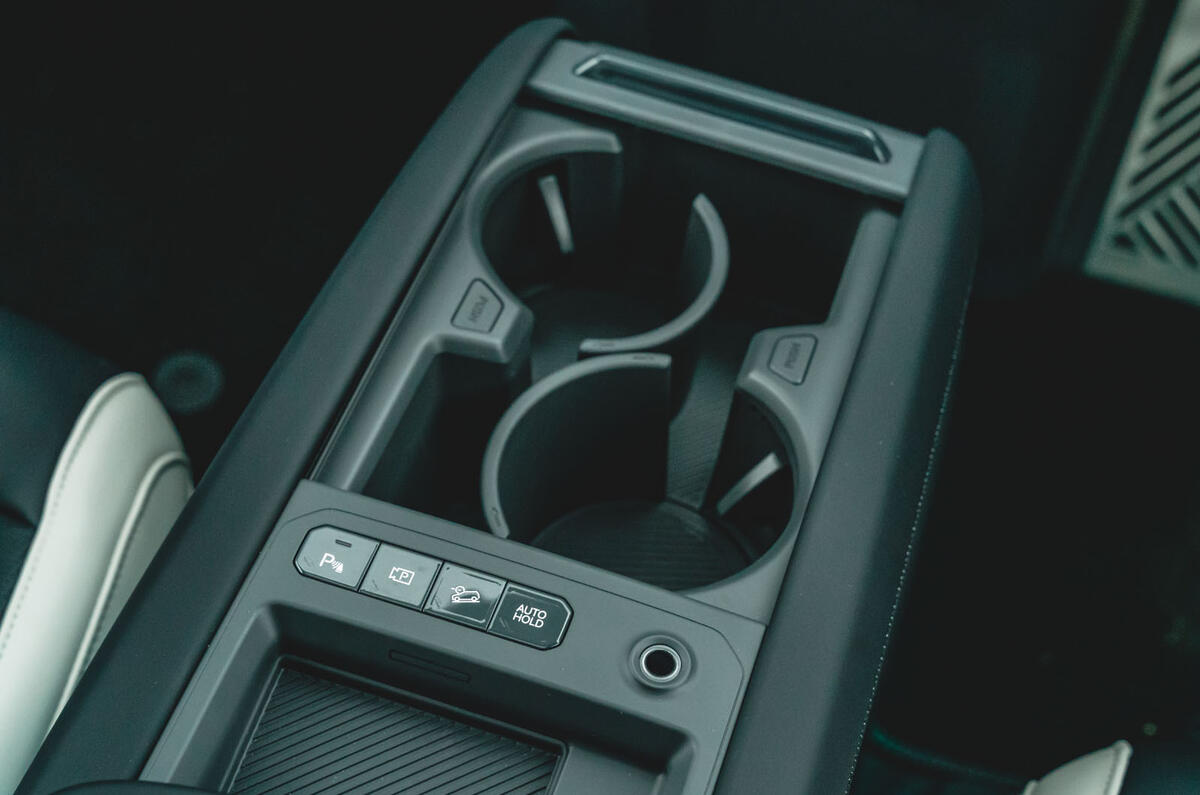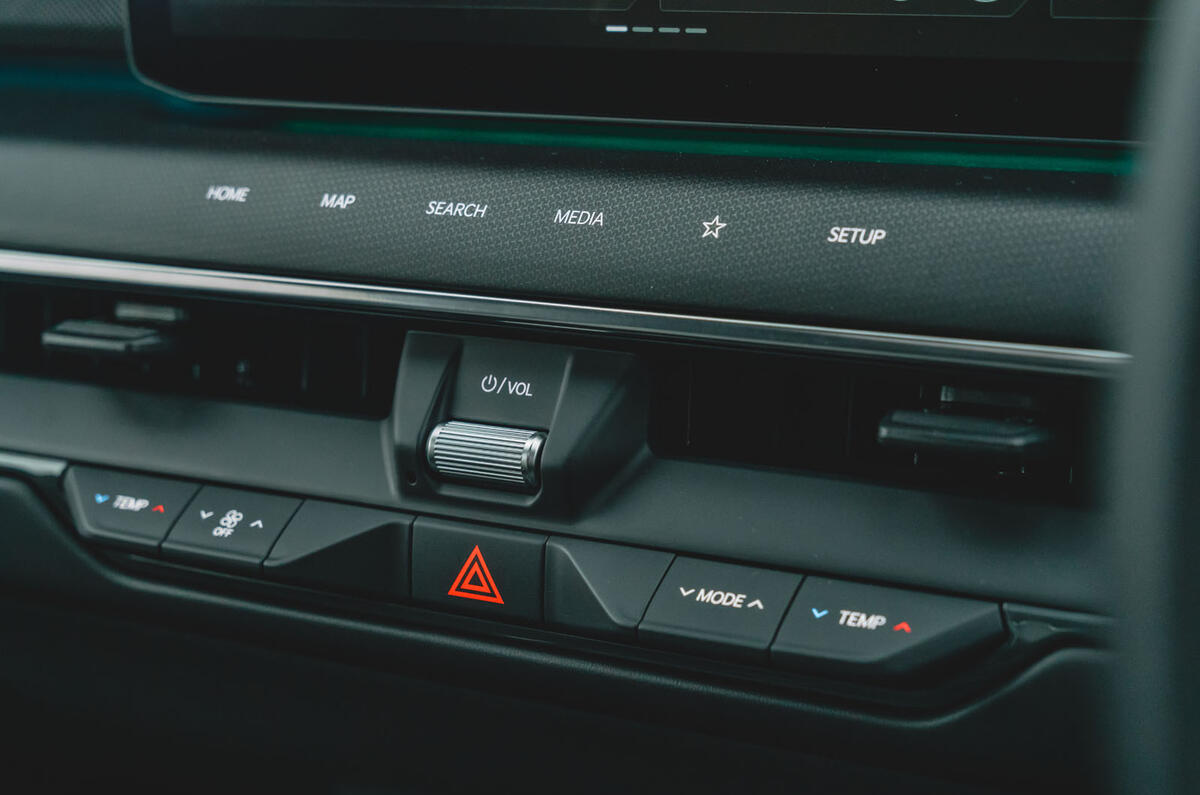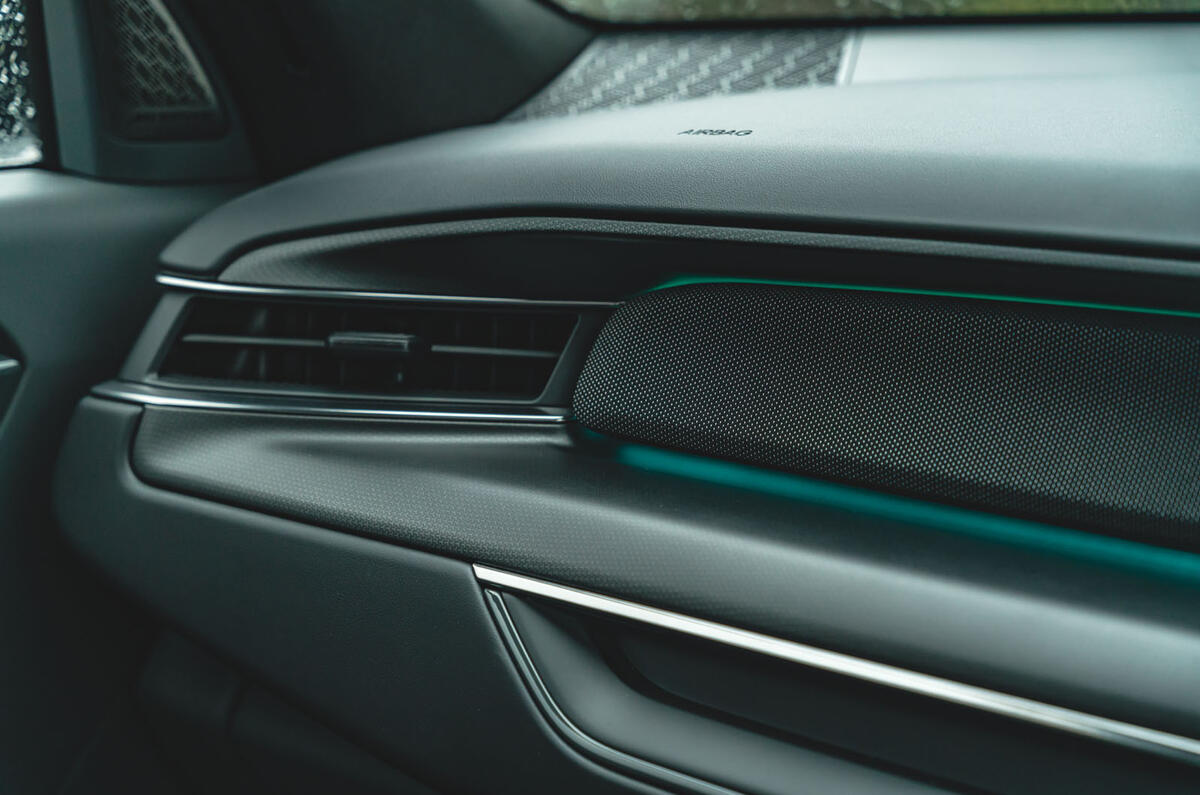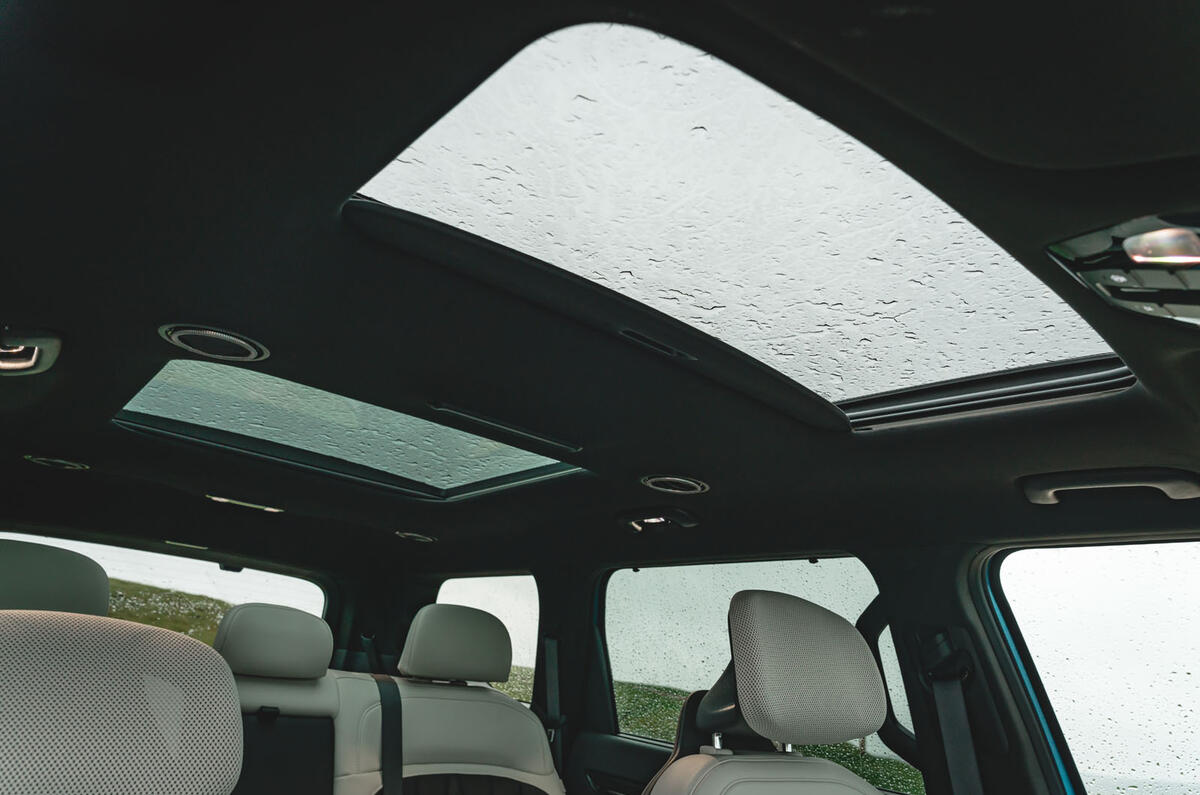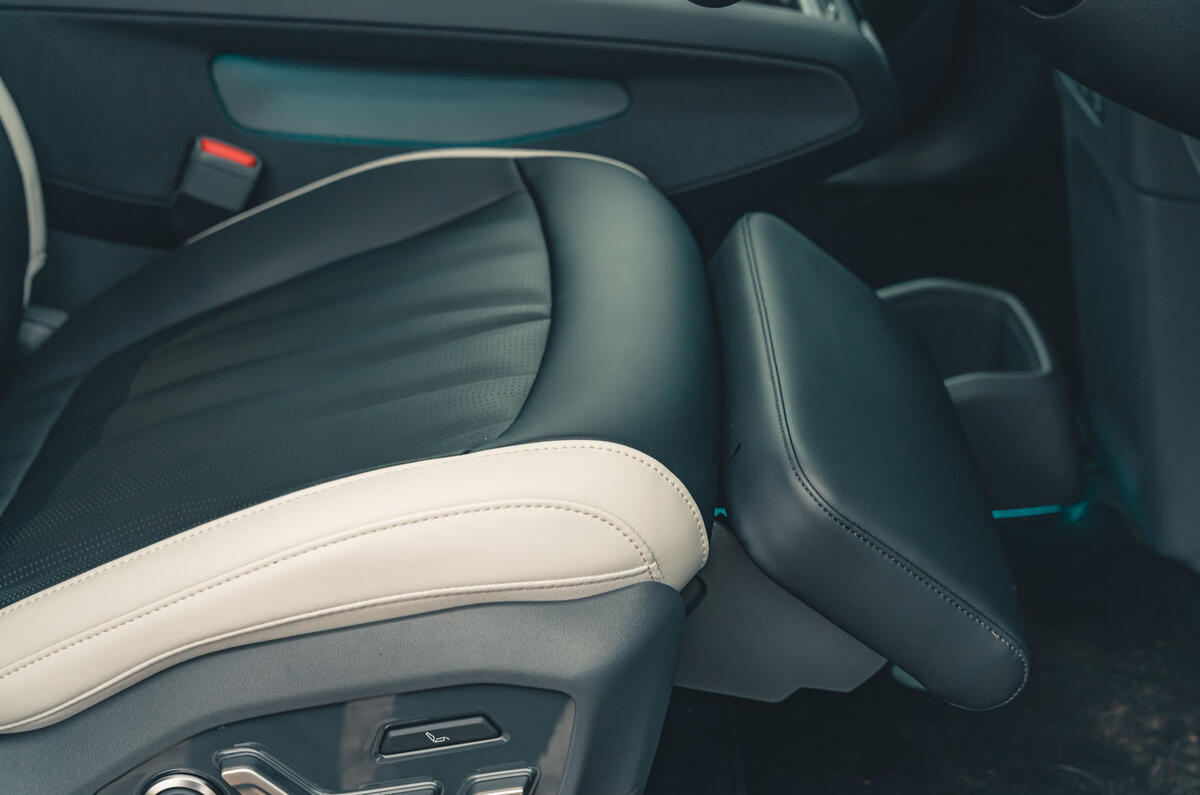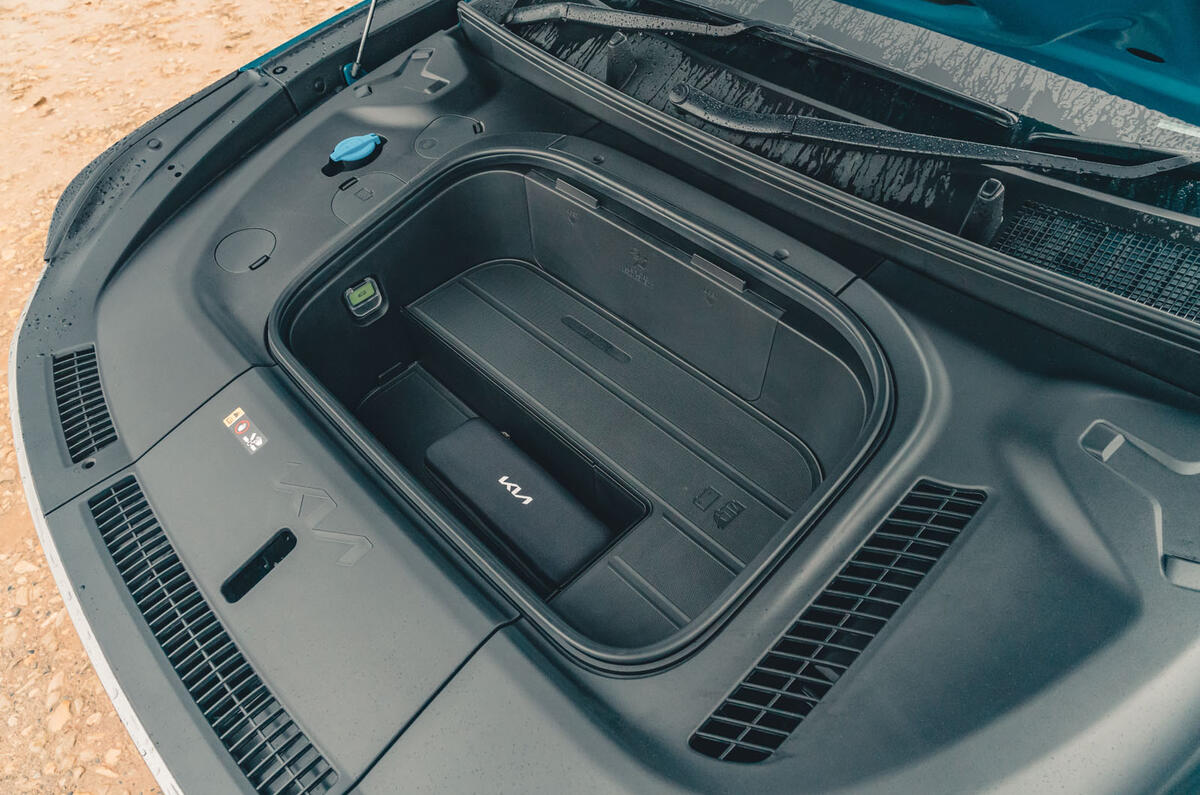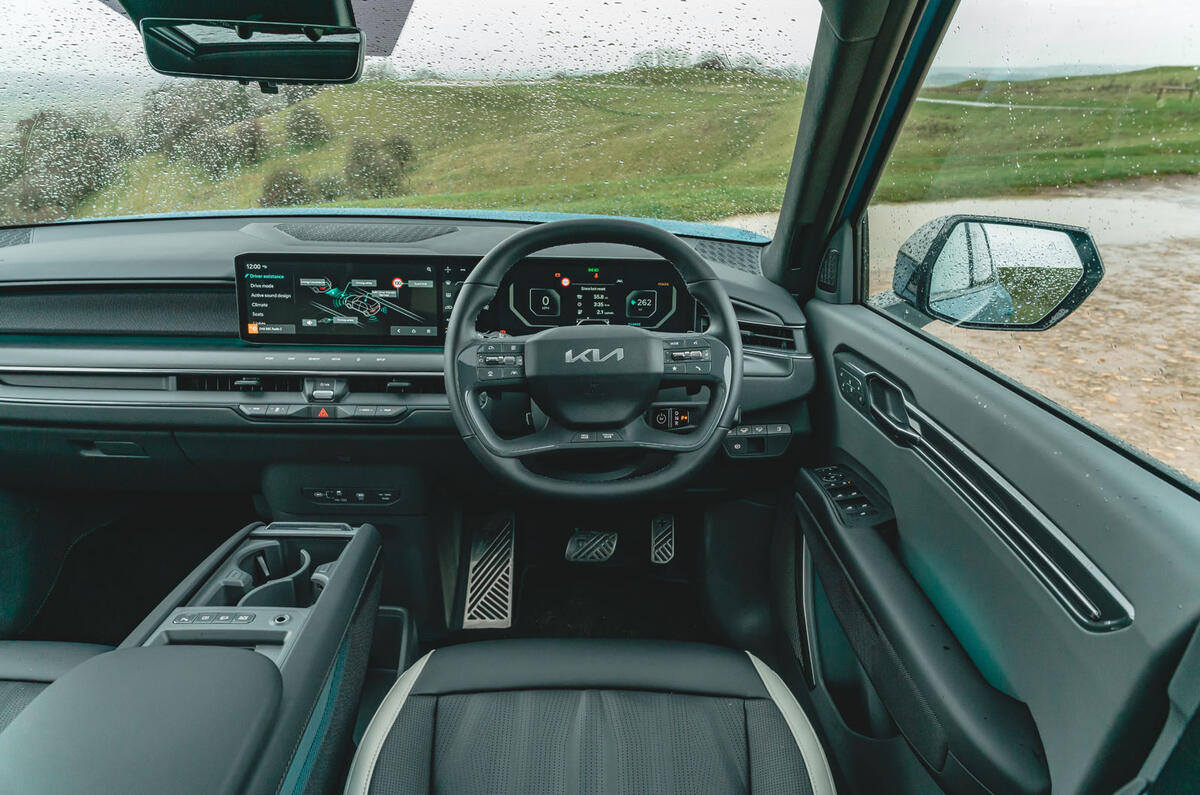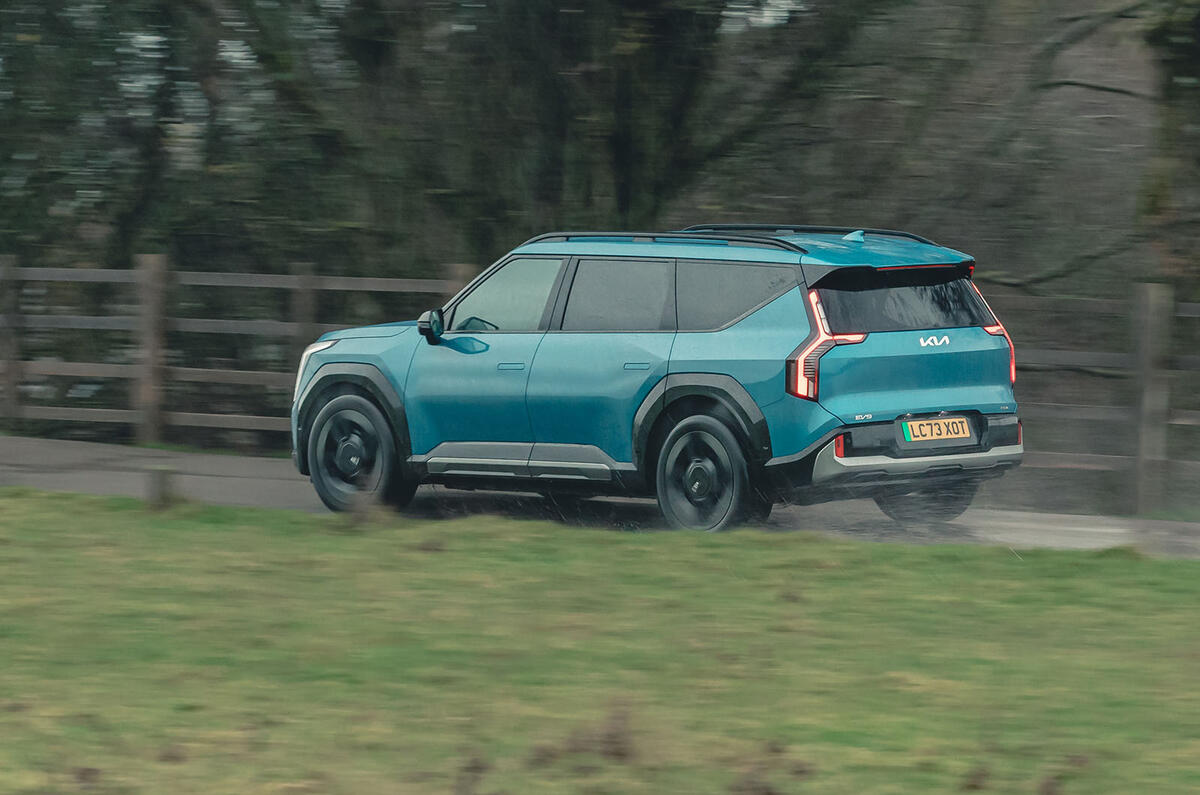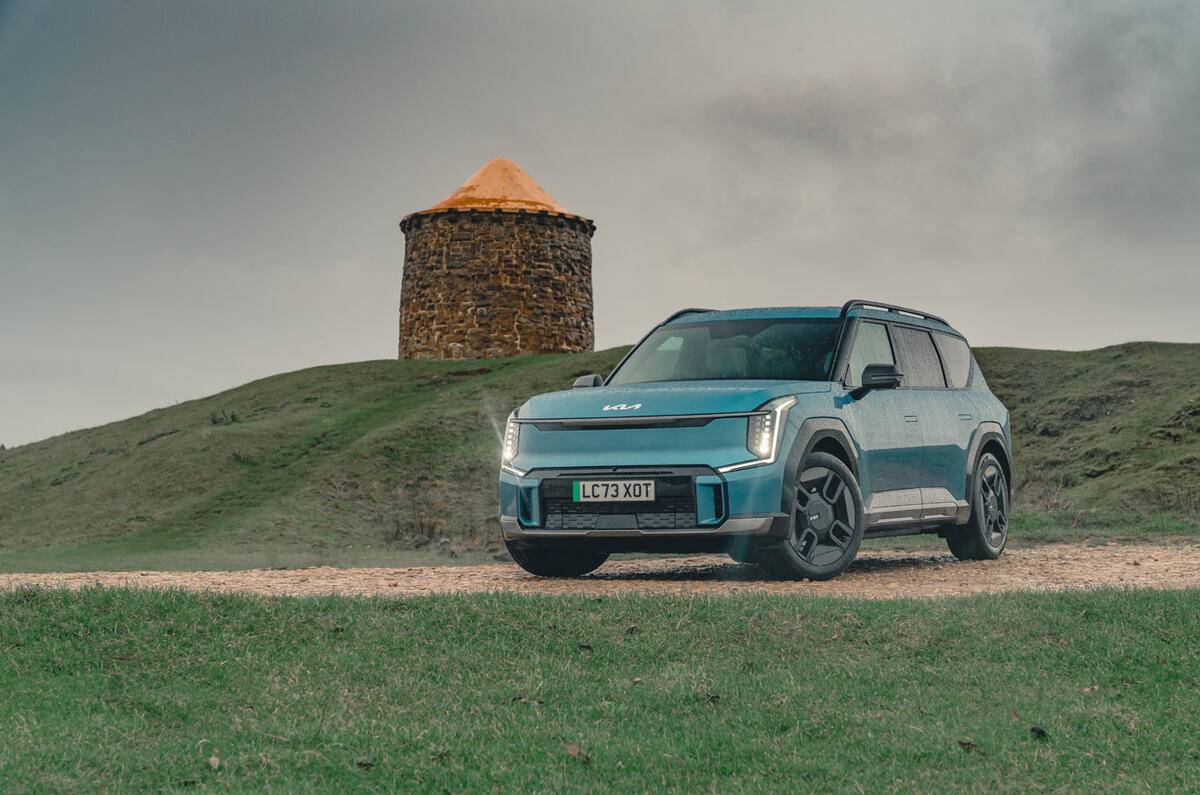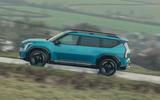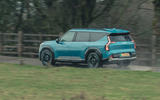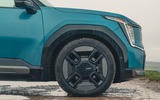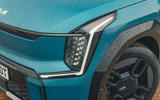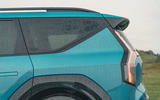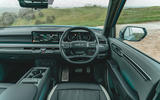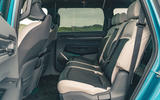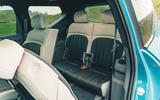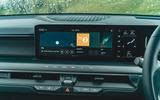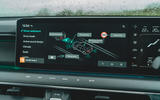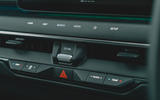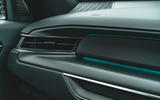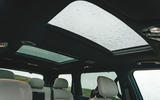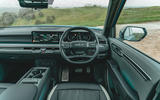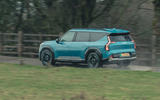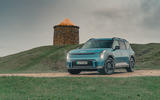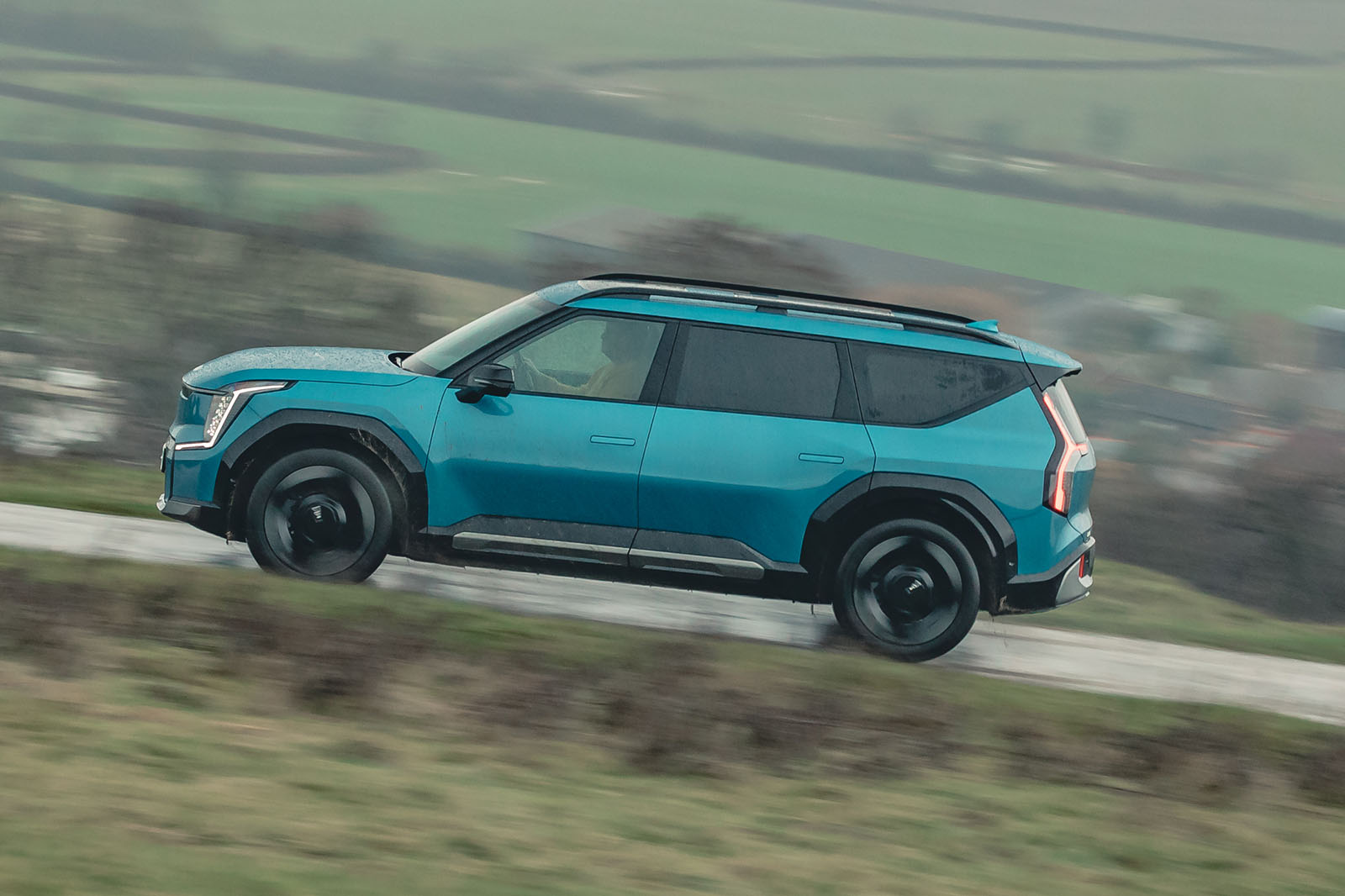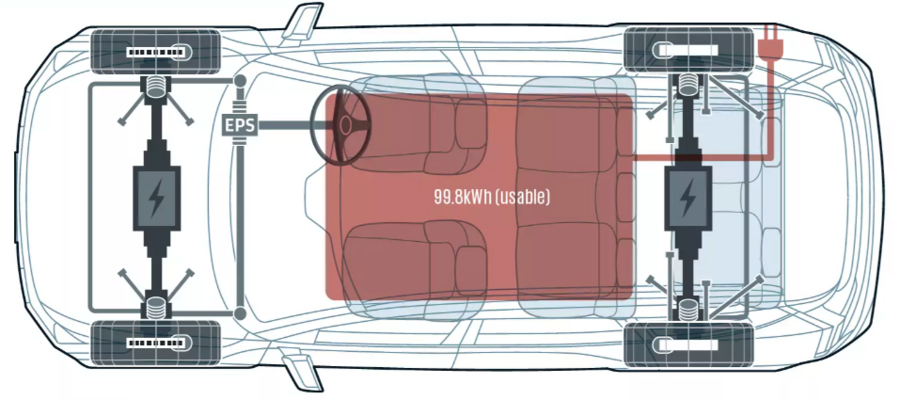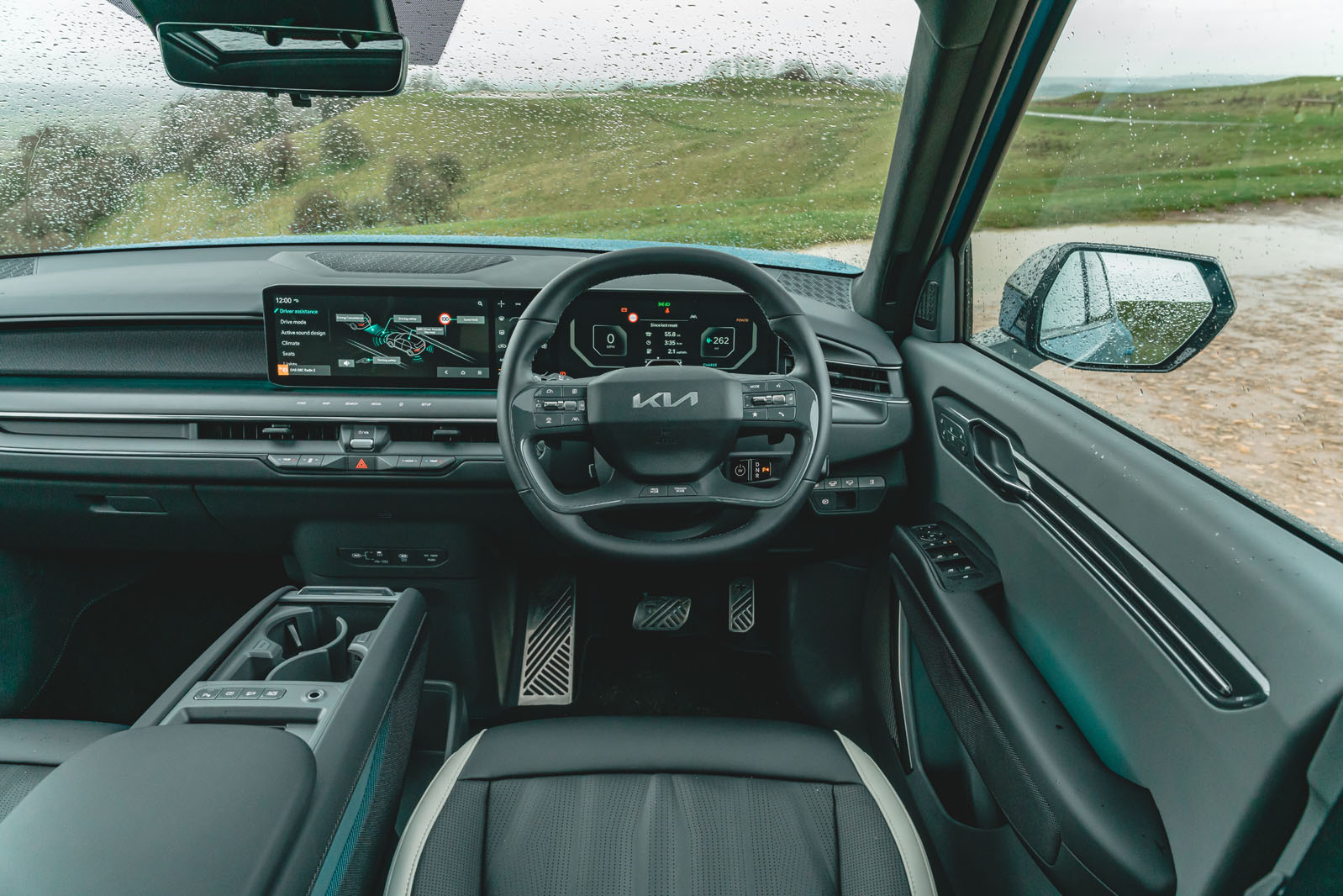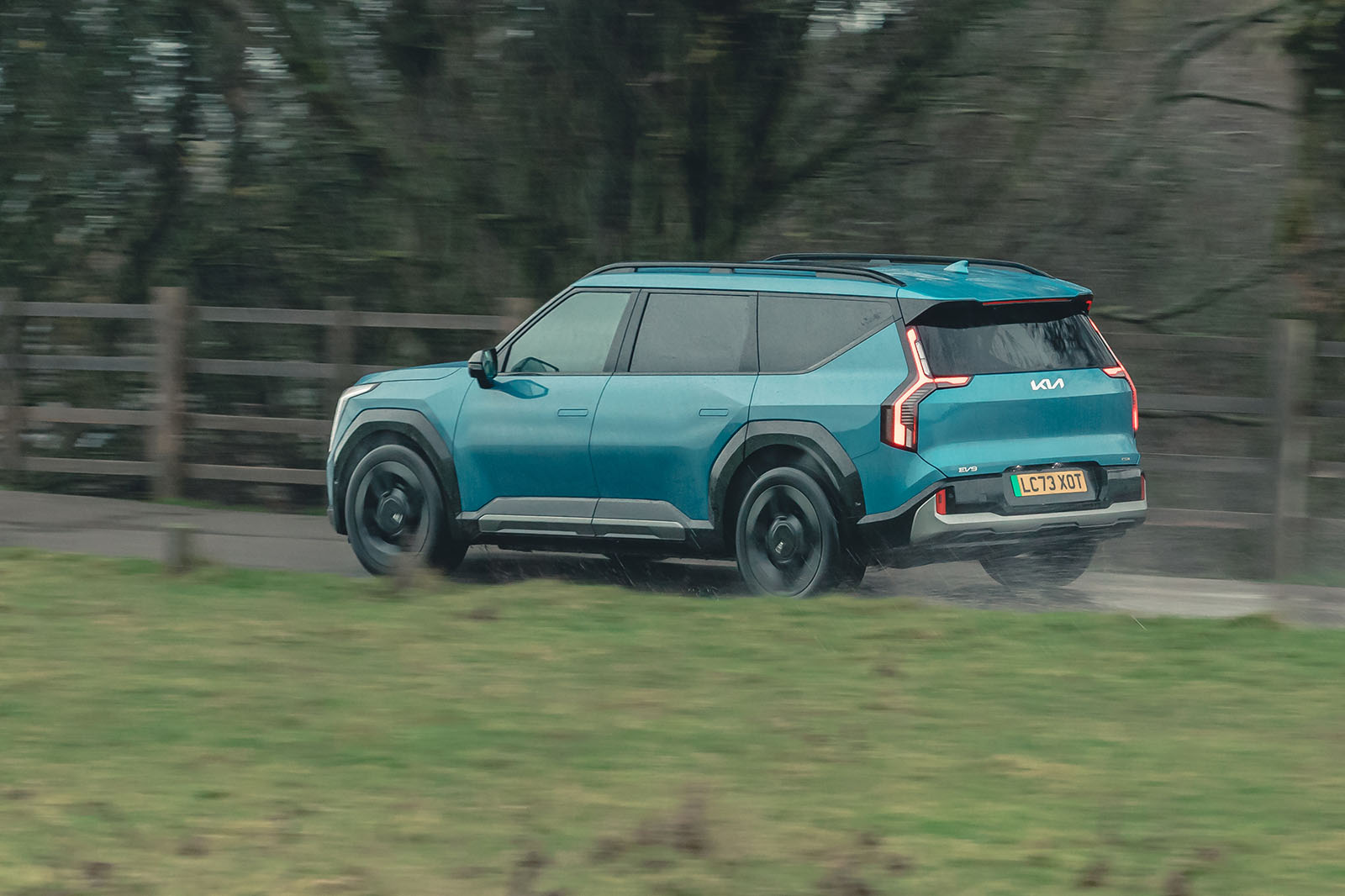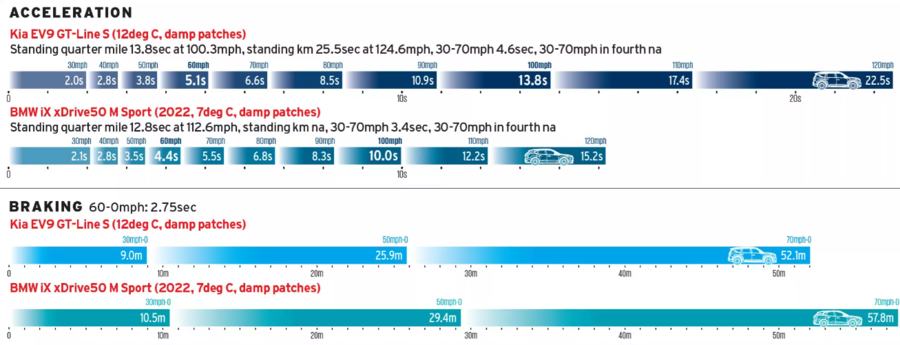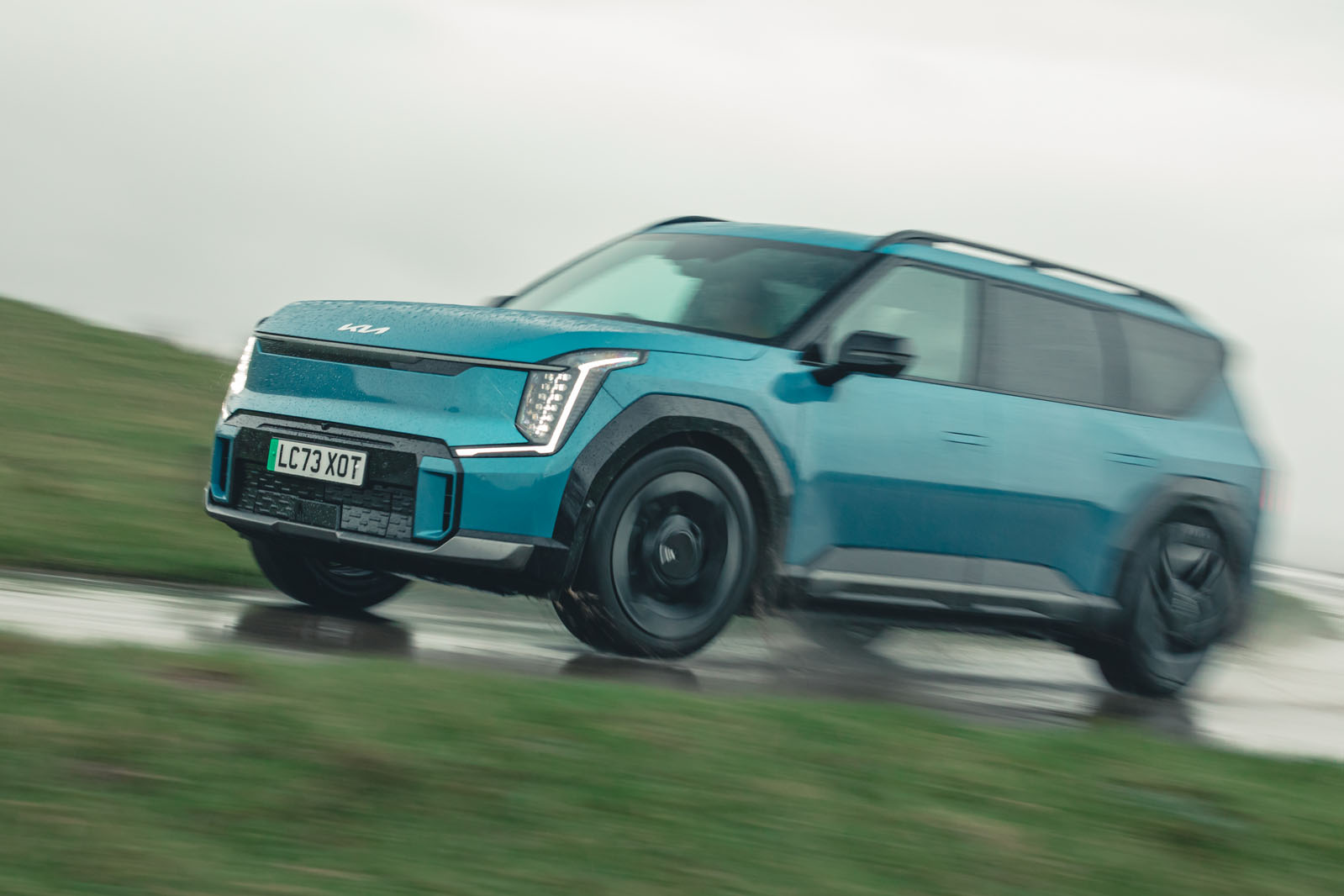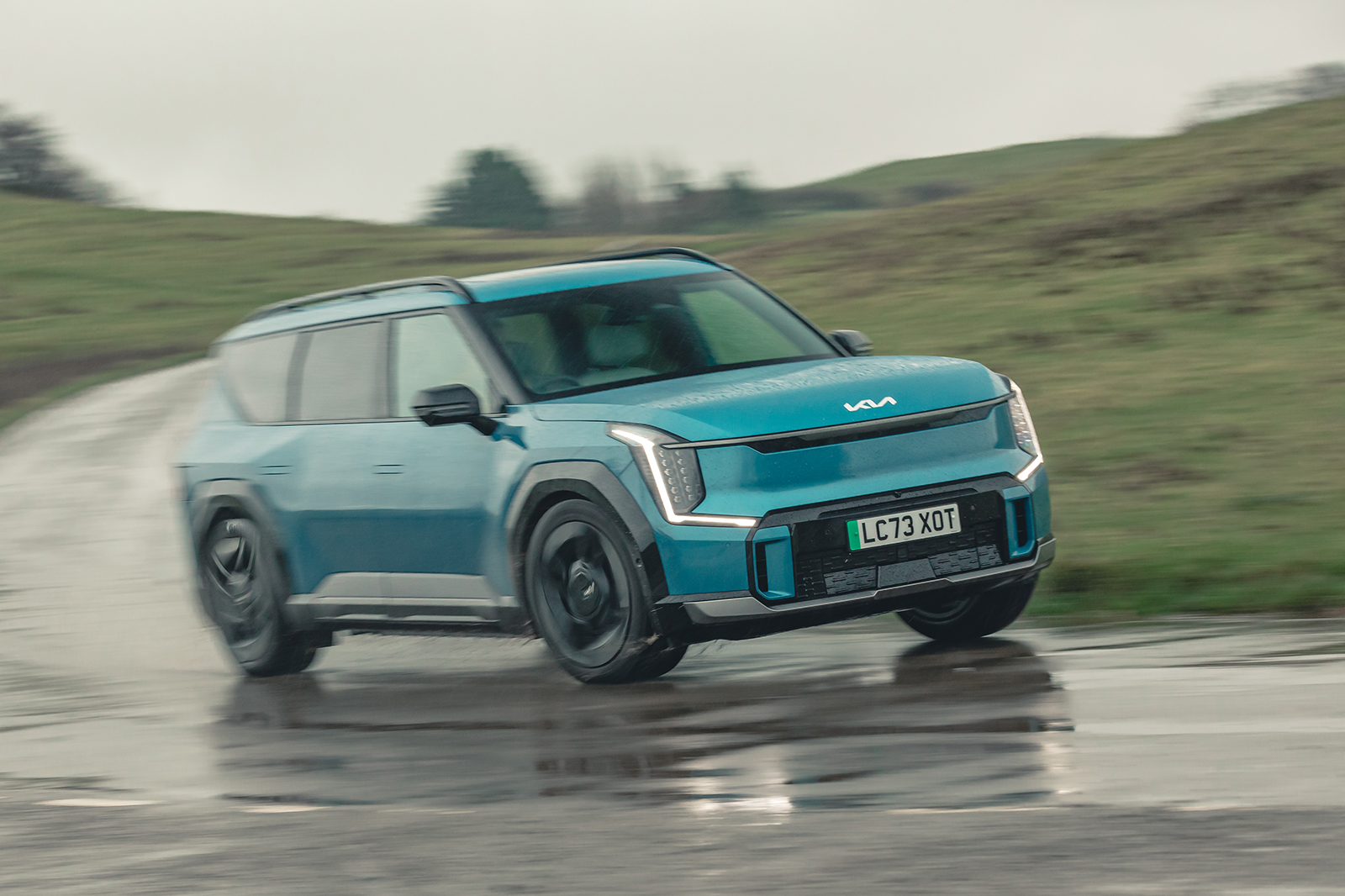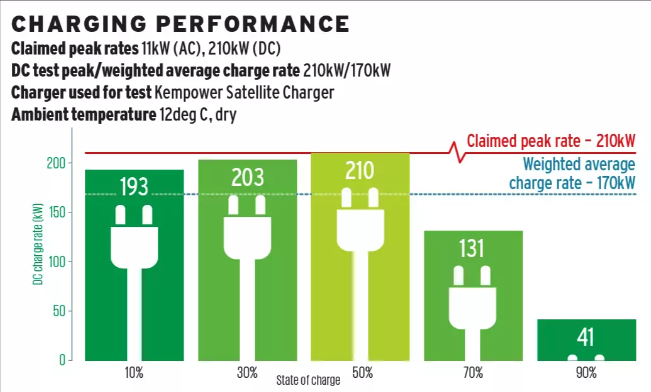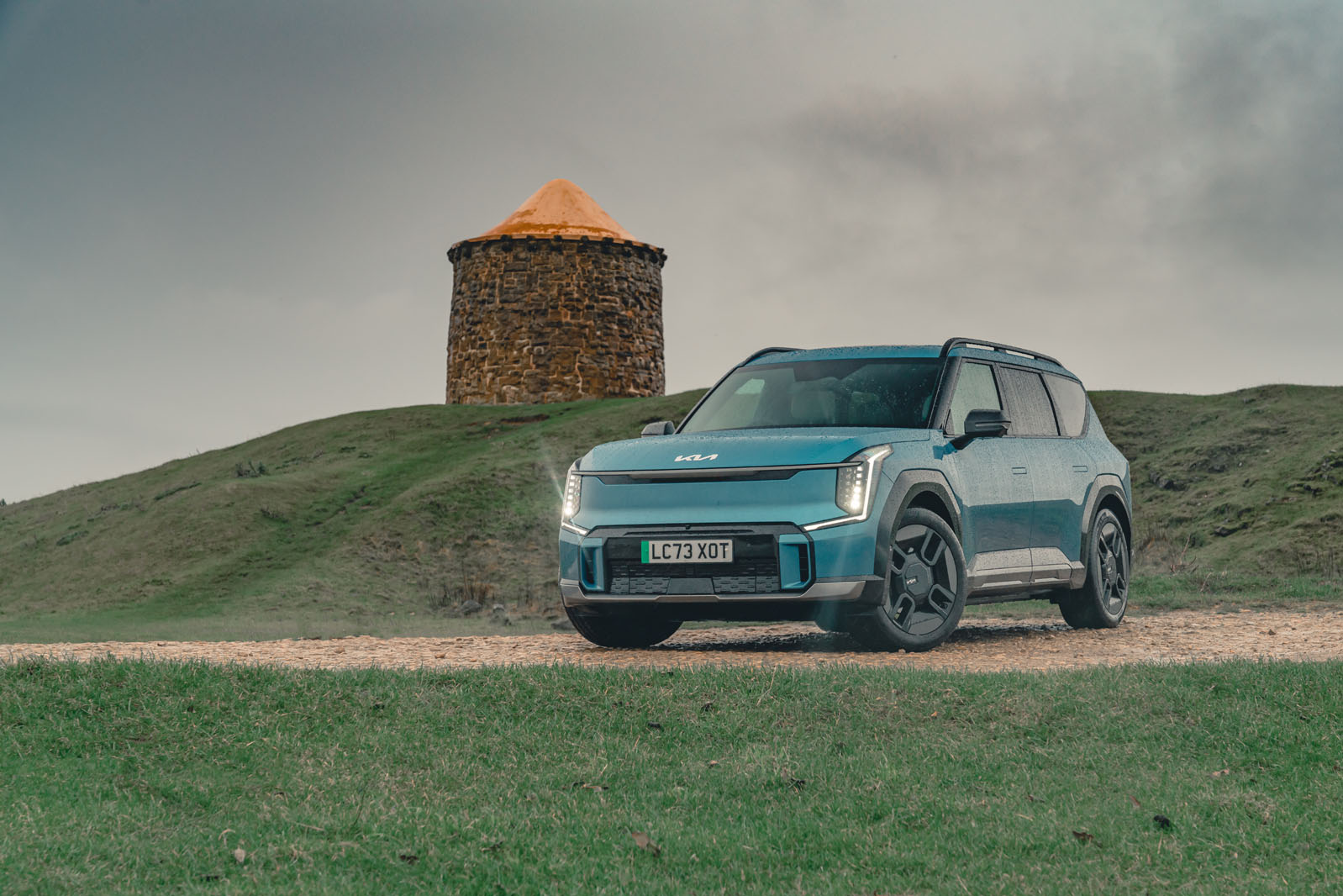Flush-fitting pop-out door handles more like those of a Range Rover Velar than of a Kia EV6 admit you to the interior.
On occasion, they fail to present when you need them or, worse, seem to need a second or third tug to open the driver’s door, but they work about as well as any retractable handle on the market right now (which is to say still not quite well enough for our liking).
Once you’re inside, the EV9 begins to reveal what it’s all about: space, comfort, versatility – and a luxuriousness that is, at least in some ways, well beyond the ken of any of Kia’s other current models.
The driver sits fairly high and upright in front of a largish steering wheel and Kia’s double-screened bank of digital display consoles.
Taller testers wished for greater length in both cushion and squab in the range-topping GT-Line S version, which comes as standard with Premium Relaxation seats. Lateral and lumbar support are both good, but greater rearward adjustment in the headrest would improve comfort.
The sense in fitting motorised recliner-style supports for your calves to the front seats (on GT-Line models and above) seems questionable, though. ‘Sleeping seats’ may work in the back of limos, where the front passenger seat can be slid and folded forwards out of the way, but in this case they add little true lounging potential.
The entry-level Air and mid-level GT-Line are seven-seat only, whereas the top-spec GT-Line S can be had in a six-seat configuration, which swaps the second row's three-seat sliding bench for a pair of swivelling ‘captain’s’ chairs.
We’ve tested both the GT-Line S with six seats and the Air with seven seats. The former had as much outright second-row occupant space as we measured in the back of an iX in 2022,
That’s particularly impressive considering they leave a pair of third-row seats that are large enough for smaller adults and growing kids to travel in perfectly comfortably. Four of the five rear seats get their own cupholders and USB-C charging ports, as well as Isofix child seat anchorages. The rearmost pair stow and deploy electrically and are easy to access.
In the EV9 Air with seven seats, accommodation is excellent and the boot is big enough for a reasonable amount of shopping cargo. In five-seat mode, the loading space under that cover is a little shallow (blame those third-row seats and a motor on the rear axle) but it’s otherwise very generous.
This, clearly, is an SUV ready to make big families entirely comfortable and it caters to their needs very well indeed. That it could, in the front, look and feel just a little more materially rich and lavish becomes obvious as you fiddle with switchgear and run your hands over some of its mouldings, though. In this respect, the EV9 does seem like a £45,000 EV6 derivative ‘acting up’ more than perhaps a £75,000 car should.
Kia may claim to have invested its budget more responsibly, into the wider use of recyclable materials rather than showier perceived quality for its own sake, but what it has produced doesn’t have abundant appeal to the senses.
Although the car’s underlying material quality is good, for premium brand regulars who might otherwise buy a BMW, Volvo, Audi or Mercedes, the lack of material razzle-dazzle may be the one significant area where this interior is found wanting.
Multimedia system
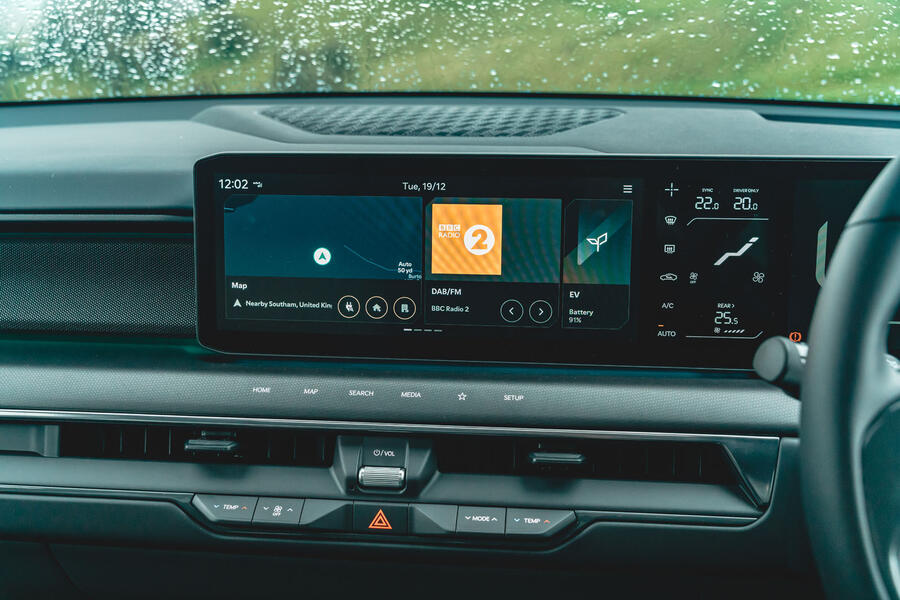
The EV9 comes with twin 12.3in infotainment and instrument displays. There are two wired smartphone connections in the front row and four more USB-C charging ports in the rear. Go for a GT-Line S car and you get a driver’s head-up display as well, with customisable content.
Wired smartphone mirroring for Apple and Android is standard, with wireless mirroring supposedly coming to all variants via a software update. The layout of the home screen is pretty simple and there are haptic permanent shortcut ‘buttons’ below it to skip directly to the menu you need, so navigability is decent, although a physical cursor controller on the centre console or steering wheel would make it better still.
The navigation system is fairly easy to set and it is clear in its instructions, but voice recognition address input seems less accurate than in most premium cars. However, it is easy to choose a nearby public charger and follow the route.




